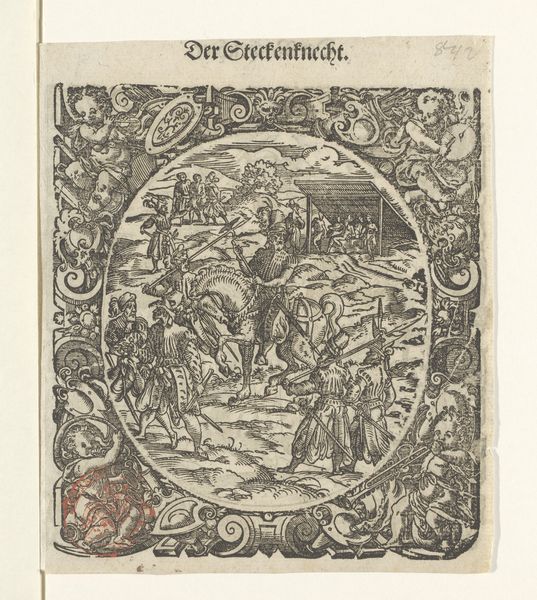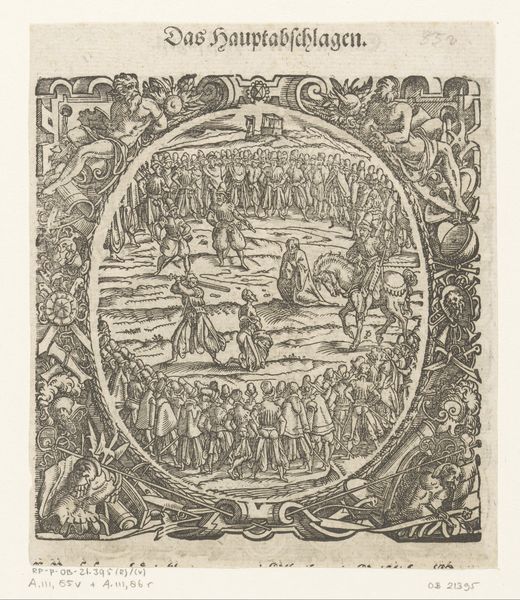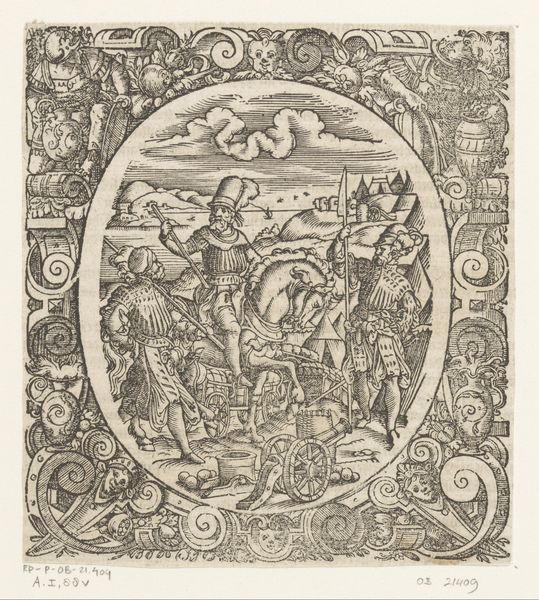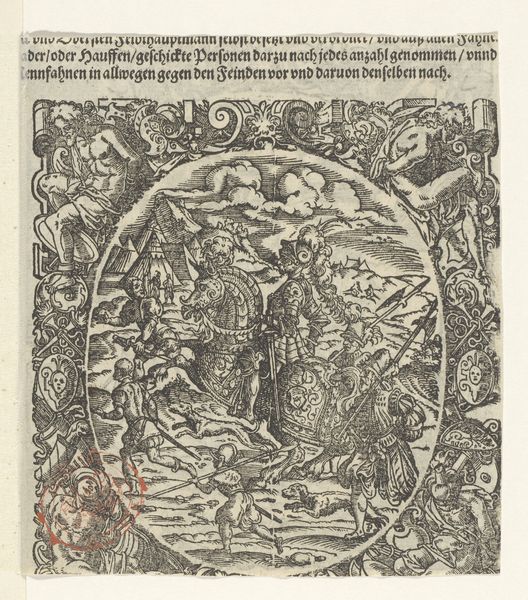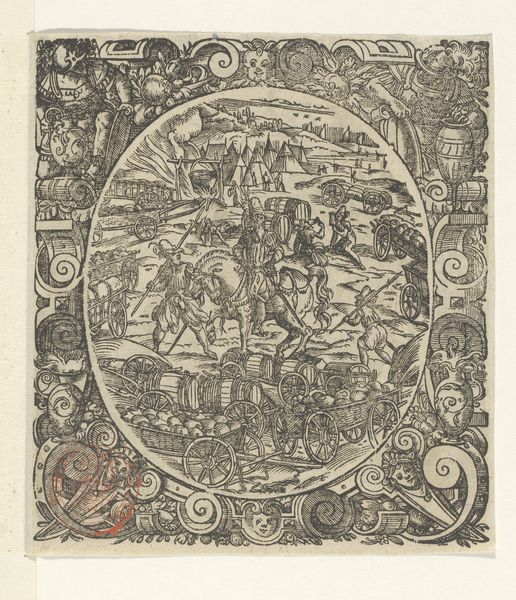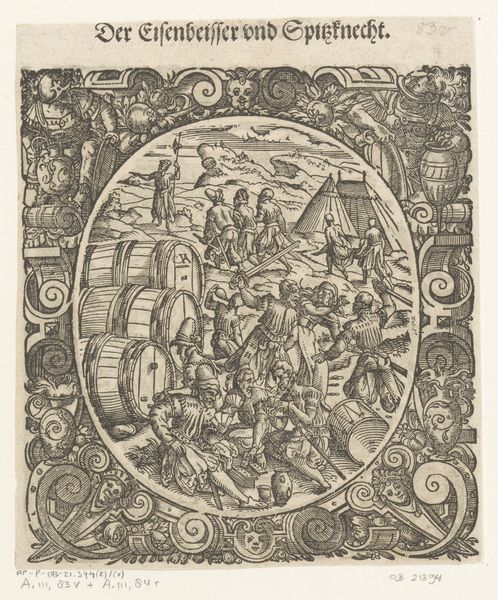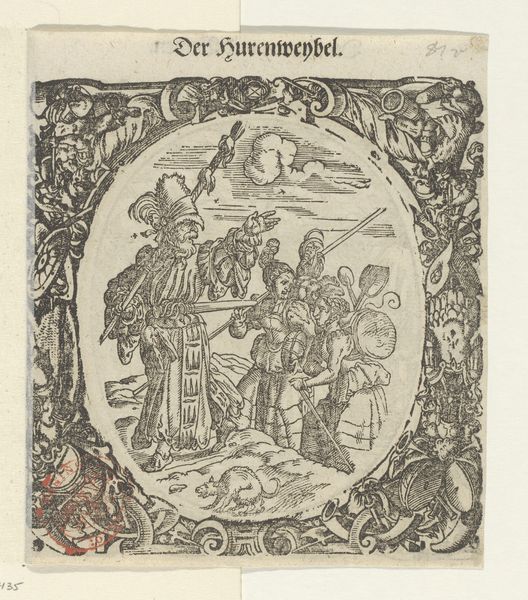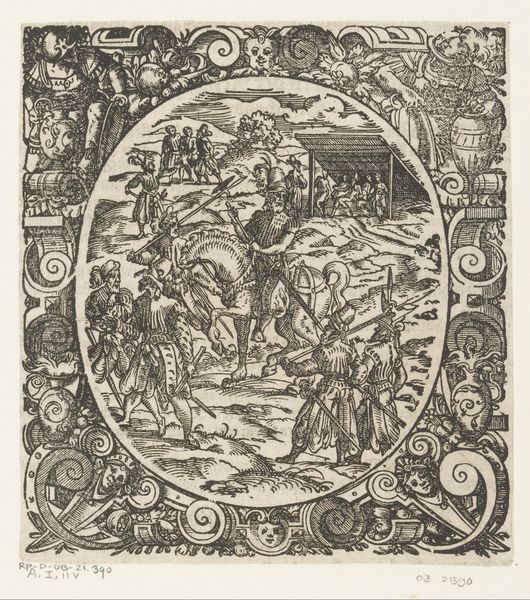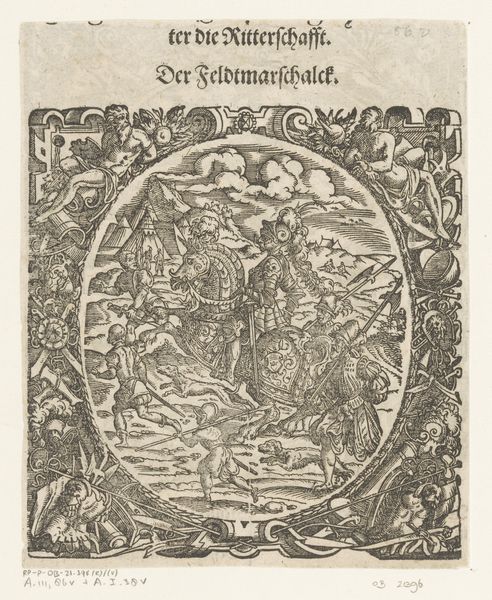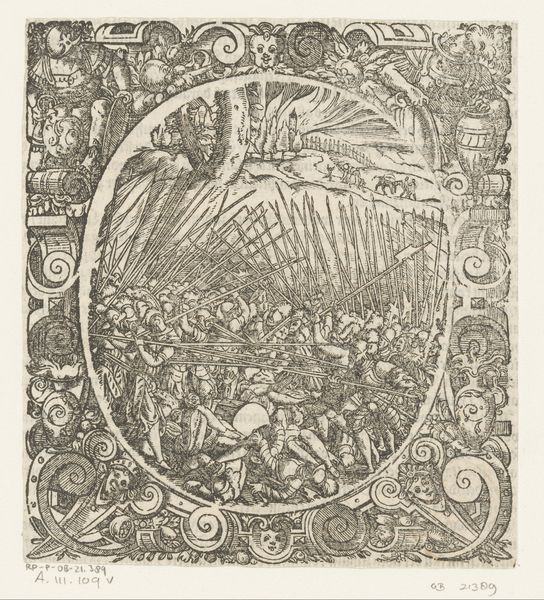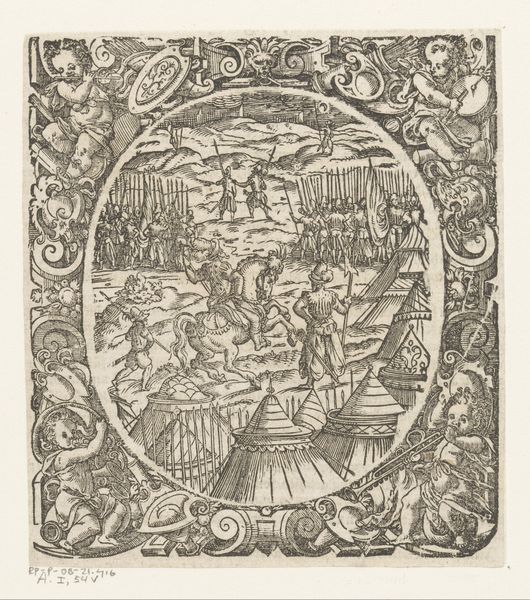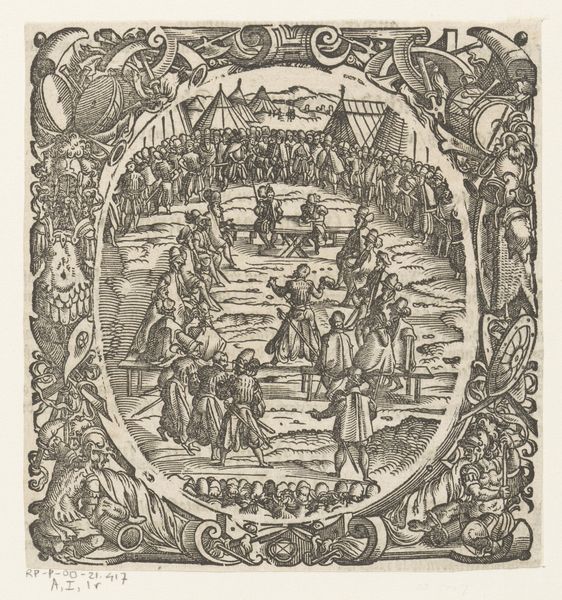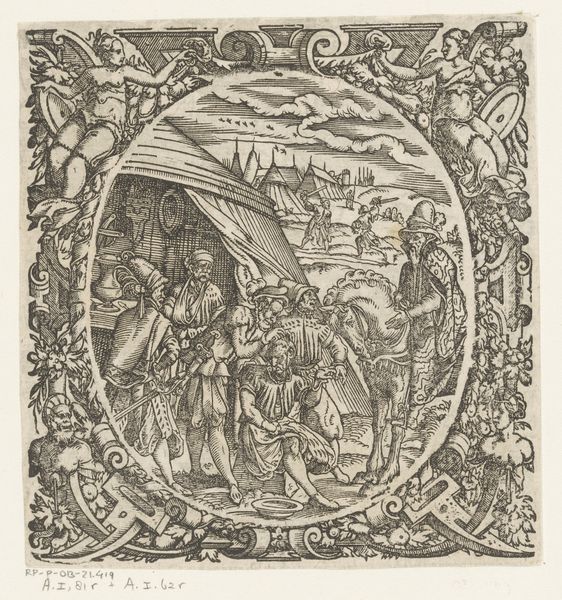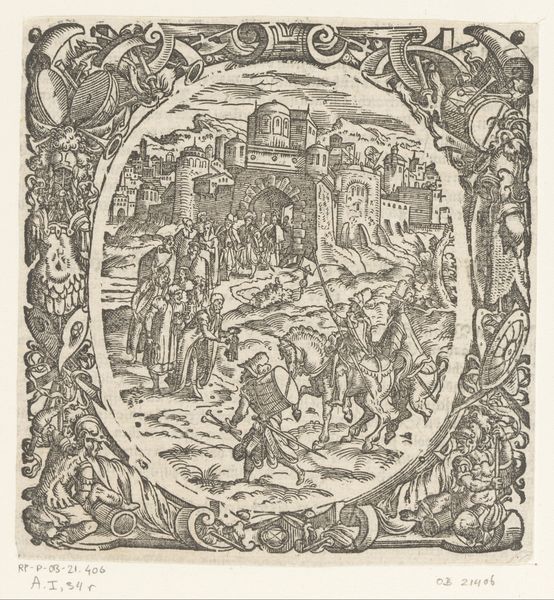
print, engraving
#
pen drawing
# print
#
figuration
#
history-painting
#
engraving
Dimensions: height 142 mm, width 133 mm, height 114 mm, width 96 mm
Copyright: Rijks Museum: Open Domain
Curator: Editor: So, here we have Jost Amman’s 1573 engraving, "Spitsroeden lopen," housed here at the Rijksmuseum. It looks incredibly detailed and quite brutal. What do you see in this piece? Curator: Well, the title refers to "running the gauntlet," a military punishment. But let's look deeper. What historical events might have informed Amman’s choice of subject matter? This was a period rife with conflict related to religious freedom. Editor: It was, wasn't it? So, this isn't just about military discipline; it’s about the era’s religious and political tensions too? The expressions on the faces really speak to that. Curator: Exactly. Consider the Reformation and its impact. Punishments like these were used not only within armies, but to oppress religious and political dissidents. Who are those being punished? Are they political prisoners or religious nonconformists, scapegoated and brutalized under the guise of military order? Editor: That's a compelling point. The crowd almost feels complicit. Curator: Indeed. And the decorative border – skulls, urns, classical motifs – juxtaposes the graphic violence at the center, creating a stark commentary on the supposed ‘civilization’ inflicting this cruelty. How does that tension strike you? Editor: It is jarring – making the violence seem both sanctioned and part of a broader, almost ritualistic act of societal control. Curator: It suggests the normalized barbarity justified by those in power, right? Amman encourages us to question these power dynamics and reflect on whose voices are silenced in such brutal spectacles. What do you make of this artwork now, after considering its historical and political layers? Editor: I see now how Amman turned a seemingly straightforward scene of military punishment into a powerful critique of injustice and oppression during his time. Curator: And, crucially, it encourages us to examine such systems in our own time, right? Art as a tool for constant vigilance and critical interrogation.
Comments
No comments
Be the first to comment and join the conversation on the ultimate creative platform.
